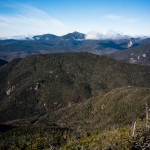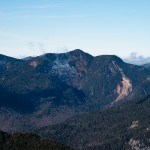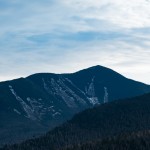Nippletop Via Elk Pass (and Dial Mountain)
Kathy and I had been preparing for this weekend’s hiking for the past couple months, so we stocked up on all the requisites for December in the Adirondacks: Poofy jackets, winter boots, wicking layers, and waterproof socks. As the trip got closer, the forecast emerged — and unusually was correct — 45 degrees and sunny!
Since we’ve done Adirondack hikes in the middle of August where the high temperature was 55 degrees, we needed almost none of the new clothes. We packed the Hillsound Trail Crampons from our trip last May to tackle the ice and were set.
When we first hiked Nippletop, we hiked a straight out-and-back over Dial Mountain. It followed a long day where we hiked Wright, Algonquin, Iroquois and Avalanche Pass, so getting to Nippletop over the up-down-up-down-up Dial was a challenge.

This time we opted for the prettier approach via Elk Pass. We signed in at sunrise and made our first turn onto the Gill Brook trail towards Colvin and Blake. The waterfalls along this route are beautiful and worth exploring, and the trail was mostly soggy leaves and a little mud but no ice.
We started to see small patches of easily-avoidable ice just pass the turn off for Elk Pass. The ponds at the foot of the pass were starting to freeze and were lovely. At about half way (I would estimate about 4,000′ elevation) the ice covered most of the trail, so we slipped on our Hillsounds for the rest of the summit. The Hillsounds were perfect for the day, giving plenty of grip on the ice, and the trail rewarded us with picturesque views along the way.

We enjoyed the summit of Nippletop alone, not having encountered another hiker to that point. On the way back over Dial Mountain, we passed 12 hikers in 6 groups on this picture-perfect day for hiking. As an added bonus, we met Taras (Trail Boss) on Lake Road after he completed the Lower Great Range and enjoyed his company for the last half mile.









Dick Mumaugh
December 14, 2015Interesting icy shots. Something to see there and leave there. Thought it was to be warm?